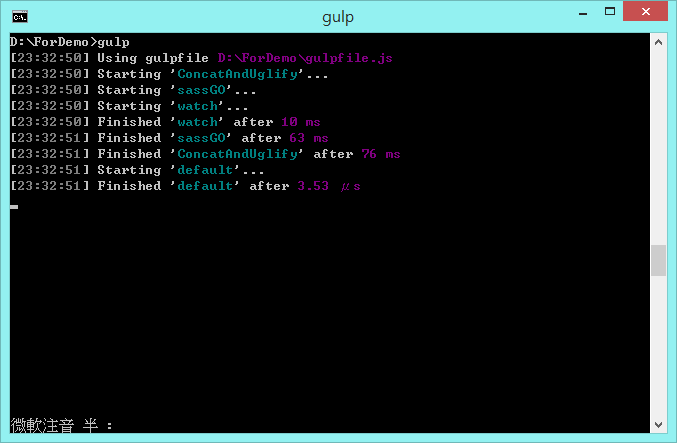

- #GRUNT CONNECT LIVERELOAD EXAMPLE INSTALL#
- #GRUNT CONNECT LIVERELOAD EXAMPLE UPDATE#
- #GRUNT CONNECT LIVERELOAD EXAMPLE UPGRADE#
- #GRUNT CONNECT LIVERELOAD EXAMPLE FREE#
cwd option now accepts separate settings for files and spawn.
#GRUNT CONNECT LIVERELOAD EXAMPLE UPDATE#
v1.1.0 Update to v1.0.1 Update to v1.0.0 Updated tiny-lr, gaze, async and lodash dependencies.The main server must include a script tag or a browser extension to the livereload server in order for the browser automatically. When the 'livereload' option is enabled for 'watch' tasks, it will handle triggerring the live reload server for each tasks and when files are modified, which then server back to main server ex: 3000. You'll have the connect web server on seperate port ex: port 9000 from your main server. Instead of restarting your server each time a static file is changed, start a static web server using (grunt-contrib-connect). How can I have the browser reload for files listed in a task? Just be aware that with this option enabled, the watch task is more prone to failure. If you would like a faster watch task or need to share the context please set the spawn option to false. It also cripples tasks that rely on the watch task to share the context with each subsequent run (i.e., reload tasks). Spawning does cause a performance hit (usually 500ms for most environments). As well as more efficiently with more complex tasks and file structures. Sandboxing task runs also allows this watch task to run more stable over long periods of time.

In an effort to keep the experience consistent and continually produce expected results, this watch task spawns tasks as child processes by default. Each time a user runs grunt a process is spawned and tasks are ran in succession. The goal of this watch task is as files are changed, run tasks as if they were triggered by the user himself or herself. Why spawn as child processes as a default? Please see issues #35 and #145 for more information. Try grouping your files within a subfolder or be more explicit with your file matching pattern.Īnother reason if you're watching a large number of files could be the low default interval. Such as '**/*.js' but forgetting to exclude the node_modules folder with '!**/node_modules/**'.

Likely because of an enthusiastic pattern trying to watch thousands of files. Why is the watch devouring all my memory/cpu?
#GRUNT CONNECT LIVERELOAD EXAMPLE UPGRADE#
Can I use this with Grunt is compatible with Grunt v0.3 but it is highly recommended to upgrade Grunt instead. In that case try launchctl limit maxfiles 10480 10480 and restart your terminal. In some versions of OSX the above solution doesn't work. Temporarily increase your limit with ulimit -n 10480, the number being the new max limit. This is because of your system's max opened file limit. } ) FAQs How do I fix the error EMFILE: Too many opened files.? If you would like to trigger the live reload server yourself, simply POST files to the URL: Or if you rather roll your own live reload implementation use the following example: It is encouraged to read the documentation for tiny-lr. Live reloading is made easy by the library tiny-lr. Try the connect-livereload middleware for injecting the live reload script into your page. One method is to use Connect middleware to inject the script tag into your page.

Since live reloading is used when developing, you may want to disable building for production (and are not using the browser extension). Once installed please use the default live reload port 35729 and the browser extension will automatically reload your page without needing the tag.
#GRUNT CONNECT LIVERELOAD EXAMPLE INSTALL#
Please visit how do I install and use the browser extensions for help installing an extension for your browser. Instead of adding a script tag to your page, you can live reload your page by installing a browser extension. Using Live Reload with the Browser Extension
#GRUNT CONNECT LIVERELOAD EXAMPLE FREE#
Feel free to add this script to your template situation and toggle with some sort of dev flag.


 0 kommentar(er)
0 kommentar(er)
